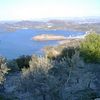syria lattakia The Citadel of Salah Ed-Din
The Citadel of Salah Ed-Din (once known as Saone, also known as Saladdin Castle) is located about 30 km east of Latakia, in high mountainous terrain, on a ridge between two deep ravines and surrounded by forest.
The castle was built in ancient times, possibly during the Phoenician period (early first millennium BC). The Phoenicians are said to have surrendered it to Alexander the Great about 334 BC. Not much is known about what happened to it between this period and the return of the Byzantines in the 10th century AD. Emperor John I Tzimisces gained control of the place from the Aleppan Hamdanid dynasty, and built the first of its defensive structures. It then fell in the hands of the Crusaders at around the beginning of the 12th century. It is mentioned that in 1119 it was owned by Robert of Saone who was given control of it by Roger, Prince of Antioch. Most of what is evident today was built at this time. The Crusader walls were breached by the armies of Muslim leader Salah ed-Din in July 1188, and it is from this victory that the castle takes its present name.
The castle remained stayed in Muslim hands until the times of Egyptian sultans Baybars and Qalawun.
One of the most magnificent features of the fortress is the 28 m deep ditch, which was cut into living rock probably by the Byzantines (it might have been completed by the Crusaders). This ditch, which runs 156 meters along the east side, is 14 to 20 meters wide and has a lonely 28 m high needle to support the drawbridge.
The entrance to the castle is through an entrance on the south side of the fortress. On the right of the entrance is a tower, a bastion built by the Crusaders. There is another a few meters further. There is a cistern for water storage and some stables just next to a massive keep that overlooks the ditch. This keep has walls of 5 m thick and it covers an area of nearly 24 m². Further on to the north is the gate where the drawbridge used to be. Also evident are the Byzantine citadel, located at the center of the fortress, another large cistern, the Crusader tea house, and a Crusader church adjoining one of two Byzantine chapels.
As for the Arab additions to the fortress they include a mosque, which dates back to sultan Qalawun, and a palace, which includes baths with courtyards and iwans. This has been slightly restored.










Inge Brand 25/02/2008 23:21
Ungewöhnliche Perspektive - gut.LG Inge
Katrin MeGa 22/02/2008 18:24
Das Bild gefällt mir sehr gut! Gute Perspektive und Farben.LG Katrin